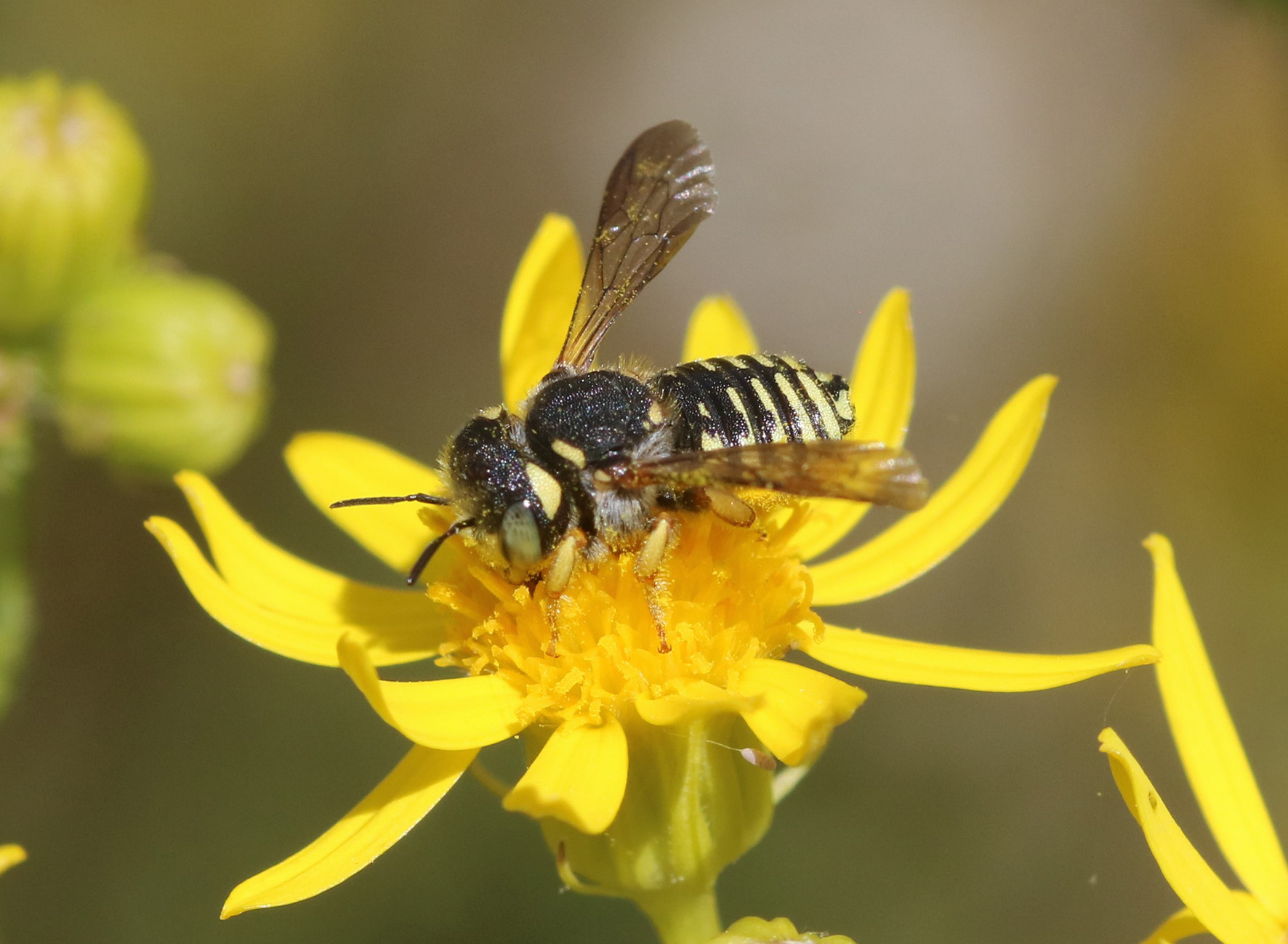6 March 2024
Identifying bees is now easier
International team unveils DNA barcodes from Iberian bees, an essential tool for monitoring
In times of biodiversity crisis, it is urgent to know the existing species and provide tools that allow monitoring their populations, as well as understanding the relationships between species and identifying the threat factors to their conservation. DNA barcodes are short sequences of genetic material (DNA nucleotides) that allow us to distinguish species, just as barcodes allow us to distinguish products in supermarkets. An international team has now revealed the DNA barcodes of Iberian bees, an essential monitoring tool.
The now published dataset contains 514 species and 1,059 specimens. The species included represent around 47% of the diversity of Iberian bee species and 21% of the diversity of endemic species, complementing pre-existing data. If we consider the bees present in Portugal, we now know the DNA barcodes of 91% of the species. “Taxonomy, distribution and determination tools are the fundamentals elements to develop to correctly monitor the species”, says Denis Michez, entomologist at the University of Mons.
Bees are among the most familiar insects and their role as pollinators is widely recognized. When visiting flowers to collect pollen and nectar, bees facilitate the reproduction of hundreds of thousands of species of flowering plants, including many crop species that are important for human diets.

(Above: Example of a bee from Apidae family and with wide distribution in Europe. Anthophora podagra Lepeletier, 1841 | Credits: Thomas Wood)
The specimens were found between 2014 and 2022 and are deposited in 4 collections, one in the Netherlands, at the Naturalis Biodiversity Center, and in three collections in Portugal: the collection of the FLOWer Lab at the University of Coimbra, the collection of the Natural History Museum and Science of the University of Porto (MHNC-UP) and in the reference collection InBIO Barcoding Initiative (IBI) of the BIOPOLIS Association (Vairão, Portugal). “It is essential to have accessible entomological reference collections that researchers can use to study and compare results,” says Sónia Ferreira, researcher at the Research Center for Biodiversity and Genetic Resources (BIOPOLIS-CIBIO) at the University of Porto.
With the launch of the European Commission’s initiative to protect European pollinators, several European projects focused on pollinators, including bees, are in place. The work carried out takes place in the context of the project “Biodiversity Genomics Europe”, the largest European project linked to genomics to study biodiversity and is linked to other European projects ongoing on taxonomy (Orbit, Arcade), red list (Pulse) and population trends (Safeguard, Cultivar).
The Iberian Peninsula is recognized as a global hotspot for bee diversity in the Mediterranean basin. More than 1,100 species of bees are found in this territory, which corresponds to approximately 5% of the 20,000 species known globally. Around 100 of these species are endemic, meaning they cannot be found anywhere else in the world.
Due to their high diversity, bee species are difficult to identify in the Iberian Peninsula and there are (still) few published identification resources. “The difficulty in identifying them has impeded scientific understanding of their communities and the challenges they face,” says Thomas Wood, researcher at the Naturalis Biodiversity Center who has been studying Iberian bees since 2014.
Despite this important contribution, there are still more than fifty bee species not represented in DNA barcode reference collections. The work started in 2023, and led by researcher Hugo Gaspar from the FLOWer Lab at the University of Coimbra, focuses on knowledge about the distribution and identification of Portuguese bees. The ARCADE project will include analysis of thousands of specimens in national historical and contemporary collections, and sampling in favourable habitats across the country.
Paper:
Wood T, Gaspar H, Divelec RL, Penado A, Silva TL, Mata V, Veríssimo J, Michez D, Castro S, Loureiro J, Beja P, Ferreira S (2024) The InBIO Barcoding Initiative Database: DNA barcodes of Iberian Bees. Biodiversity Data Journal 12: e117172
https://doi.org/10.3897/BDJ.12.e117172
(Headerphoto: Example of a bee from Megachilidae family and with wide distribution in Europe. Pseudoanthidium eximium (Giraud, 1863) | Credits: Thomas Wood)




